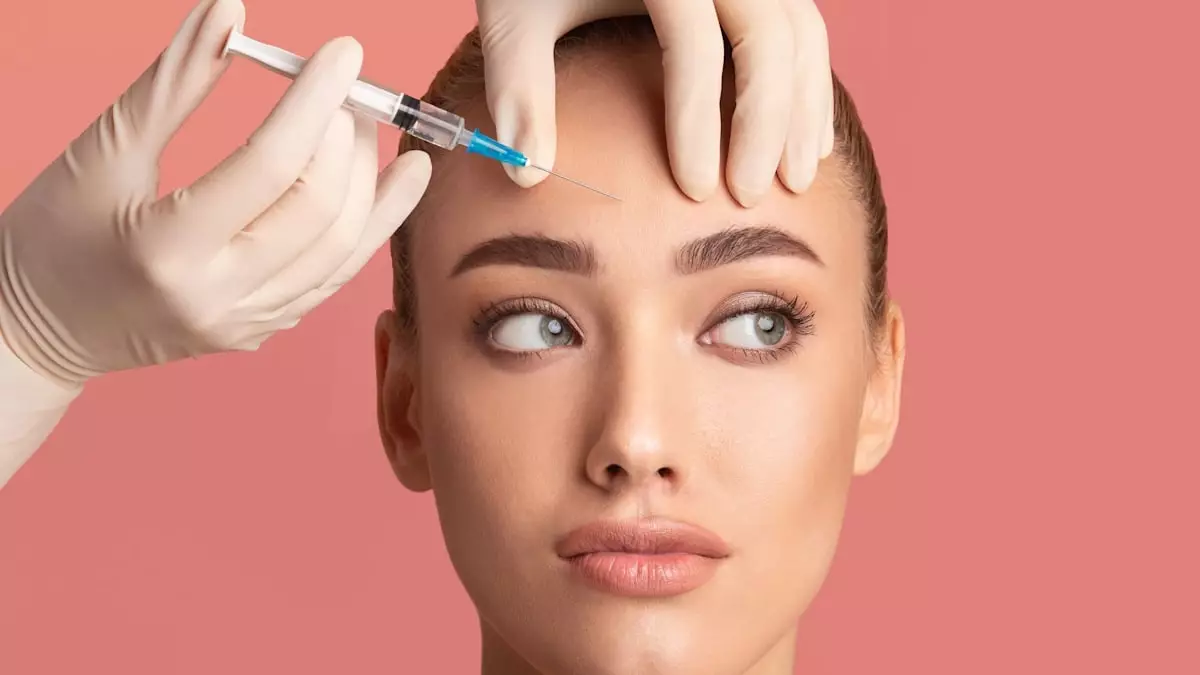In the ever-evolving landscape of beauty and skincare, the pressures of societal expectations can cast a long shadow. As a seasoned Beauty Editor at the age of 48, I’ve witnessed firsthand the rapid advancements in beauty technology—from lasers to peels and microneedling. Yet, amidst the myriad of treatments available, one stands out as a divisive topic: Botox. Despite my years of experience immersed in aesthetic innovations, I have refrained from this popular injectable. However, encroaching age, defined by deeper forehead wrinkles, has sparked a tempting curiosity about Botox, raising questions about its implications for both individual self-image and the broader societal beauty standards.
The cultural landscape is shifting, with Botox increasingly becoming a rite of passage among younger demographics. A staggering 27% of Americans receiving Botox were 34 or younger in the last year, a notable increase from 21% in 2015, according to the American Academy of Facial Plastic and Reconstructive Surgery. Watching friends embrace the smooth, wrinkle-free allure of Botox can foster feelings of envy. As much as I promote the values of authenticity and self-acceptance, the desire for flawless skin often surfaces, accentuated by the normalization of cosmetic enhancements through social media.
This trend, dubbed ‘prejuvenation,’ sees Gen Xers actively pursuing cosmetic interventions as a preventive measure against aging—a concept that feels foreign to previous generations who might have embraced age with grace. Botox treatment, once reserved for those seeking to erase the past, now beckons a younger clientele hoping to thwart the visible scars of time from ever appearing. This cultural shift leaves me pensive and concerned, especially for my teenagers. The message we send to the younger population can deeply influence their self-perception and acceptance of natural beauty.
The prevalence of filters, video calls, and social media has fundamentally altered how our youth view themselves. Engaging in conversation with Chloe Combi, co-founder of The Respect Project, further illuminated the magnitude of this issue. Alarmingly, over 50,000 cosmetic procedures—primarily performed by unlicensed practitioners—were conducted on individuals under 18 in the UK last year. This trend not only highlights the vulnerability of young individuals to societal pressures but also showcases a startling disconnect from reality, as people increasingly turn to cosmetic alterations to align their appearance with the distorted depictions seen online.
Plastic surgeons like Dr. Jimmy C. Sung note a troubling trend: younger patients frequently express dissatisfaction with their appearance after scrutinizing their reflection on screens. They often misinterpret normal facial textures—characteristics that denote identity and age—as flaws, demonstrating the perilous nature of these beauty standards. As individuals chase an ideal perpetuated through digital platforms, the risk of fostering dissatisfaction and anxiety becomes alarmingly high, creating a cycle that is difficult to escape.
While the allure of Botox is undeniable, it’s crucial to critically evaluate the message it sends. The superficial smoothness that comes with this treatment does not address the deeper issues of self-worth and authenticity. Renowned professionals, including Dr. Sung, assert that education around holistic approaches to skin health is imperative. Rather than masking imperfections, we should be arming the next generation with knowledge about proper skincare—emphasizing the importance of sun protection, hydration, and stimulating natural skin regeneration.
Regenerative treatments that harness the body’s innate healing capabilities, such as laser therapies, present a compelling alternative. These modalities promote the production of collagen and elastin, fostering a natural glow that does the talking without resorting to toxins. As a Beauty Editor who has recently experienced non-invasive procedures, including Sofwave, I can attest to the transformative power of such treatments that prioritize skin health and longevity while concurrently celebrating one’s natural beauty.
As I embrace my 48th year, navigating a confusing beauty landscape full of contradictory messages prompts a personal re-evaluation. The choice to remain Botox-free often feels empowering, a stand against an increasingly homogenized definition of beauty. It is essential to cultivate a sense of authenticity and self-love while encouraging younger generations to embrace their skin—wrinkles, textures, and all. Ultimately, fostering a culture of acceptance and genuine self-excellence is the most meaningful way to combat the superficial allure that Botox represents, ensuring that future generations can navigate their paths with a sense of confidence and authenticity.

